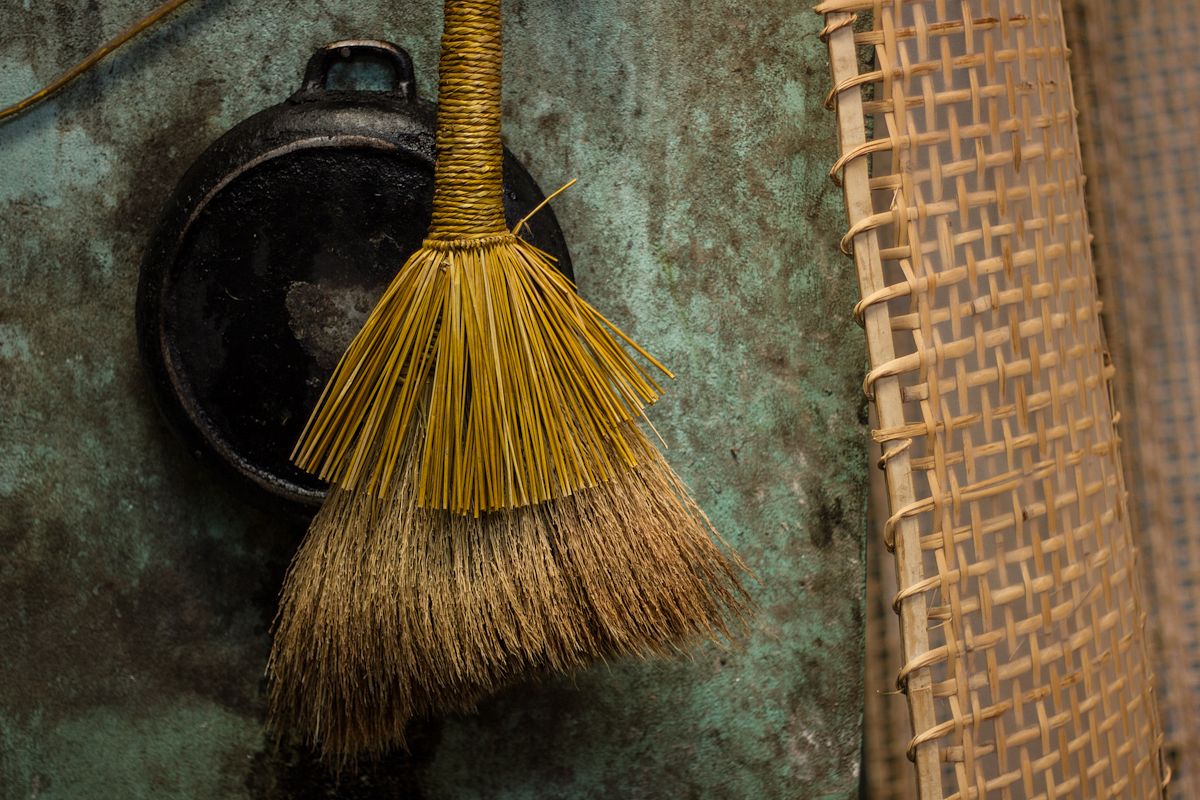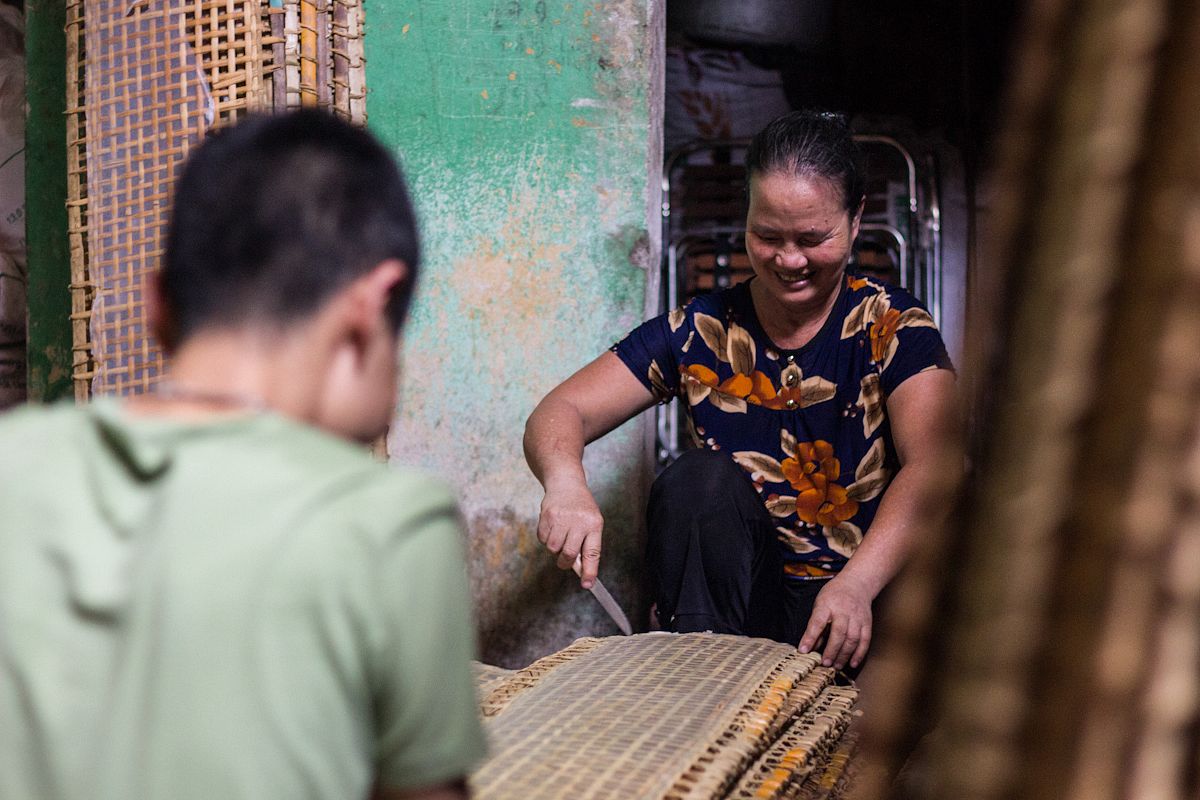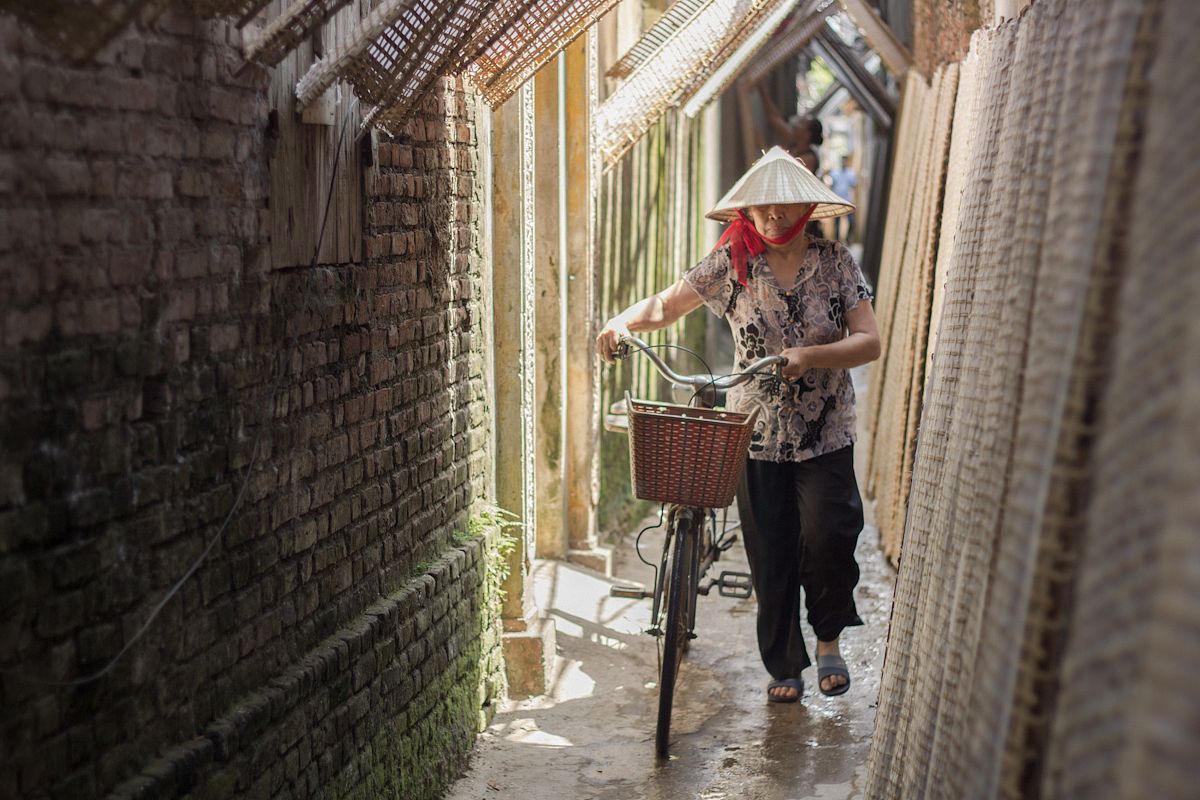A few hours after sunrise in the small village of Tho Ha, alleyways morph into picturesque tunnels of drying rice paper, while ladies toast crackers over fire in the streets.
Alleys run like arteries through the village, clogged by rows and rows of bamboo panels, each drying a sheet of rice paper (bánh đa nem) made at 5am that morning.
On sunny days, villagers bring out thousands of rice-covered panels (phên) and stack them along the village streets. They fix them high up in the alleys too, and early morning sunlight flows over the sheets creating creamy, translucent light patterns.
When wolfing down fresh bánh xèo, you would never think how much work goes into making a single sheet of rice paper. Every day they can, in this village just 45 kilometers outside Hanoi, locals work from before dawn to make as many as time allows.
In recent years, Tho Ha has developed a name for itself due to its photogenic rice paper trade and ancient architecture. Yet Tho Ha used to be known for creating ceramics, and you can read this history in the alleyways. Porcelain boxes (tiểu sành), which store the bones of deceased relatives, were used in the past as bricks. Those they failed to sell, or that were damaged in the kiln, formed the building blocks of new walls.
With no land to plant paddy in, villagers depended on the river for trading and earned a living by creating goods by hand. Much of the sand from the river has been used up now, so since the 1990s, they have moved away from ceramics. Like the river, their way of life has shifted, with rice paper the new beating heart of the village.

Alleyways clogged with drying rice paper panels.

Moving rice paper into direct sunlight to dry.

Bamboo panels stacked high up in the alleys creating little tunnels.

Hundreds of bamboo panels line the alleyways.

Porcelain boxes, normally used to store the bones of the dead, are used as bricks.

A lady toasts rice crackers over an open fire.

Not just the streets, but the insides of houses were stacked full of drying rice paper.

Grass-fiber broom temporarily relieved of its duties.

Preparing the rice paper for removal.

Peeling rice paper off the bamboo grids.

A man carries bamboo panels through the village.

Light streams through the panels, casting patterns on the wall.

Transporting huge stacks of rice paper through the streets.

A man and his son walk beneath an ancient gate.

Cycling home after a day of hard work.














